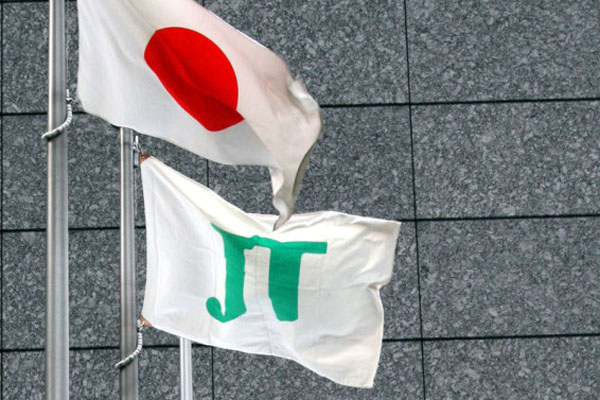British American Tobacco’s cigarette volume during the six months to the end of June, at 314 billion, was down by 5.6 percent on that of the six months to the end of June 2016.
Volume, at 58 billion, was increased by 1.7 percent in the company’s Western Europe region, but it was down in each of its other three regions: in its Asia Pacific region by 9.5 percent to 95 billion; in its Americas region by 5.3 percent to 53 billion; and in its EEMEA (Eastern Europe, the Middle East and Africa) region by 5.3 percent to 108 billion.
BAT reported that group cigarette volume from subsidiaries (excluding associates and joint ventures) fell by 5.6 percent to 314 billion, or by 5.8 percent on an organic basis, as growth in Bangladesh, Gulf Co-operation Council countries, Vietnam and Nigeria was more than offset by market contractions in Pakistan, Ukraine, Iran, Brazil, Indonesia and Japan. The company said that its market share had increased by 0.30 of a percentage point, driven by the continued growth of its Global Drive Brands, whose market share had risen by 0.50 of a percentage point, albeit on volume that was by 1.3 percent down.
Of the drive brands, Dunhill’s volume fell by 4.5 percent and its market share was lower by 0.10 of a percentage point; Kent’s volume was 1.6 percent lower while its market share was up by 0.15 of a percentage point; Lucky Strike’s volume was up by 12.4 percent and its market share was increased by 0.20 of a percentage point; Pall Mall’s volume fell by 9.6 percent while its market share grew by 0.10 of a percentage point; and Rothmans’ volume grew by 6.2 percent and its market share was up by 0.15 of a percentage point.
Meanwhile, the volume of BAT’s other international cigarette brands fell by 7.0 percent, as sales growth in State Express 555, in Vietnam, and Shuang Xi, mainly in Russia, was more than offset by lower volumes of Viceroy in Turkey and Venezuela, Peter Stuyvesant in South Africa and Vogue in Russia, South Korea and Canada.
BAT’s revenue, calculated at constant rates of exchange during the six months to the end of June, at £6,901 million, was said to be up by 3.5 percent on that of the six months to the end of June 2016. It was up by 15.7 percent to £7,717 million at current rates.
Profit from operations was up by 3.7 percent to £2,295 million at constant rates of exchange, and by 16.3 percent to £2,574 million at current rates.
Basic earnings per share were down by 15.3 percent to 121.8p.
In announcing the half-year results, CEO, Nicandro Durante, said the performance of the group in the first six months of the year had been in line with expectations and demonstrated the good organic progress the company was making.
“The relative weakness of sterling led to a significant tailwind on our reported results, with revenue 15.7 percent higher and profit from operations up 16.3 percent at current rates of exchange,” he said. “Excluding the translational tailwind and the adjusting items, adjusted revenue and adjusted profit from operations were both up, 2.5 percent and 3.2 percent respectively at constant rates of exchange.”
Durante said that BAT had made good progress with its next-generation-product business and was now present in 15 markets worldwide with its vapor products and THP [tobacco-heating product]. “In the Japanese city of Sendai, glo continues to perform exceptionally well, reaching an estimated 8 percent share and with one in three smokers in Sendai having purchased glo,” he said. “We have recently expanded our coverage to Tokyo, Miyagi and Osaka and national rollout in Japan is planned for October 2017. While it remains early days, the initial results in Tokyo are excellent, with performance ahead of [that of] Sendai over the same period. We are also now present in Canada (Vancouver) and nationally in Switzerland, with very encouraging early signs.
“To support our on-going glo expansion plans, and to meet the increasing demand, investment in Neostik production capacity is taking place in South Korea and Russia.
“We are the largest vapor company in the world, with market leadership in the US, through Vuse, and in Poland and the UK, with the latter driven by the two fastest growing vapor brands in the market, Vype and Ten Motives. Vype is now present in 10 markets and, whilst still immaterial in the context of the group, our European vapor business grew with turnover up strongly against [that of] the same period last year.”
Durante said he was delighted that BAT had completed the deal to acquire the balance of Reynolds shares on July 25.
He said the company was on course to deliver another good year. “We continue to expect profit growth to be weighted to the second half of the year, which will be moderated by the continued roll out of NGP and is against a strong prior year comparator in Ukraine,” he said. “Although the challenging environment in a number of markets continues, including in Russia, I am confident that we remain on course to deliver another year of good earnings growth at constant rates of exchange.”










